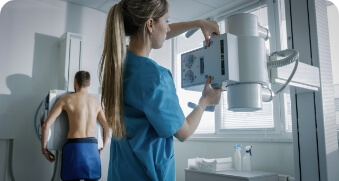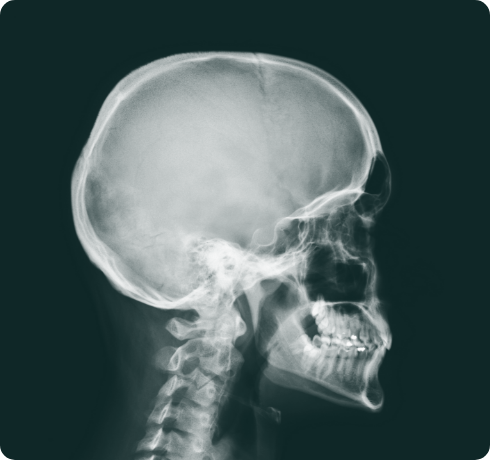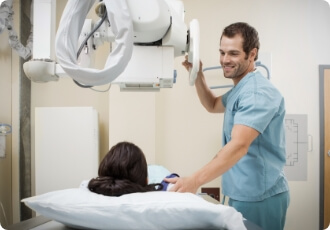Previously the purview of hardcore gamers, virtual reality (VR) has rapidly moved into mainstream life and is used in almost every industry from retail and real estate to education and, of course, healthcare, where it is regarded as one of the most exciting advancements in modern clinical practice.
What is VR?
Simply put, VR uses computer technology to create a simulated environment and then places the user inside that environment in highly immersive ways. Rather than simply watching the situation play out on a screen, VR allows the user to interact with the simulated 3D environment. In addition to actions, VR technologies can also simulate different senses such as sight, smell, hearing, or touch.
VR in the Healthcare Industry
Given it’s incredible flexibility and endless versatility, it’s no wonder that this rapidly growing technology has been embraced throughout every sector of the healthcare industry as a means to offer more efficient and effective training to medical professionals and provide higher levels of care to patients.
It is readily adapted to suit a multitude of medical niches and has vastly improved outcomes for patients with autism, Alzheimers, phobias, lazy eye, chronic pain and a multitude of other health conditions. Fields such as psychology, medicine, neuroscience, physical and occupational therapy, mental health therapy, motor and cognitive skills rehabilitation and clinical skills training have all benefited immeasurably from VR.
VR in Medical Training and Education
VR has had an enormous impact on the level of training available to medical students. In the past, only a handful of students could obtain clinical placements where, primarily as onlookers, they could get an idea of the realities of the discipline they were attempting to master.
Firsthand Experience Now Simpler than Ever
The limited number of student placements, risks for patients and students, scarcity and costliness of cadavers, and the expense of setting up simulation laboratories, all meant that students could not always get hands-on experience until after they graduated.
VR provides a cheaper, risk-free and highly accessible means of obtaining this type of hands-on experience. Surgeons use VR cameras to stream their operations allowing students to view the surgery process as if they were holding the scalpel and follow every move from start to finish.
Simulated VR environments, with virtual patients programmed to respond in realistic ways, make it easier for students to get hands-on training from almost anywhere in the world. Using only a laptop, they are able to practice everything from bedside manner and nursing to radiography and even complex and sensitive surgical procedures in a highly realistic simulated environment.
Getting a Patient’s Point of View
VR can also be used to help students, medical practitioners and even carers or family members to experience life from the patient’s point of view. VR simulations allow them to experience life as a senior, or as a person with dementia for instance, which helps them to better understand and respond more appropriately to the person’s needs.
VR Mobile Apps Deliver Healthcare Outside the Clinic
VR-based mobile applications have far-reaching implications for the delivery of medical assistance to patients outside of the clinic.
Once more, the amazing versatility of VR is evident in the immense diversity of mobile applications available that allow people to administer treatments in the comfort of their own homes. For example, VR-based mobile apps are used by patients to treat phobias and post-traumatic stress, speed up rehabilitation and manage chronic pain. Some apps are used to help patients/students better understand medical procedures. These have proven very useful for guiding non-medical users through specific medical procedures in remote areas where medical staff may not be able to reach the patient in time.
VR Environments Help Patients Deal with Chronic Pain
VR-based games and experiences have been used with great efficacy to help mitigate pain in cancer patients and other patients suffering with chronic pain.
VR gives people the illusion of being transported out of their circumstances into the virtual environment. Interacting with the VR environment places a high demand on the patient’s attention and brain resources, taking the focus off their pain and reducing their perception of pain.
Such VR-based apps have also proven effective in reducing stress and lifting the spirits of long-stay hospital patients, particularly children, as well as patients with terminal illnesses in palliative care.
Physical Rehabilitation with VR
Studies indicate that only one third of patients do the necessary exercises during rehabilitation.
Physical and neurology therapists have turned to virtual reality as a means to make exercise more fun and engaging. By combining physical exercises into games that can be customised for the patient, including neuro-impaired people, they have been able to dramatically improve compliance rates and outcomes for patients. VR devices offer the added benefit that the therapist can track and control the quality of the patient’s activity and make any necessary adjustments based on the data collected.
VR for Cognitive Rehabilitation
Patients with cognitive or similar disabilities caused by brain injuries often lack motivation to participate in rehabilitation. However, VR provides a non-threatening virtual environment where these patients can practice the tasks that may be difficult for them to do in reality.
Virtual reality-based neurorehabilitation gaming systems help such patients with motor and cognitive recovery. They can be personalised for each user and used to track progress and speed up the recovery process.
Treating Phobias and Post-Traumatic Disorders (PTSD) with VR
Mental health workers use VR in a variety of ways, one of which is to help people deal with phobias or post-traumatic disorders. Therapists use VR to immerse patients with PTSD into a virtual environment tailored to address their specific fears. The therapist controls the environment and monitors the patient’s brain activities and their responses to various stressors. This helps them offer better treatments based on a more in depth understanding of the brain and biological factors related to PTSD.
VR for Dentists
No one enjoys a visit to the dentist, but VR is making things easier for both dental practitioners and their patients. Aside from being used to relieve the stress of children and adults in the dentist’s chair, VR has also proven valuable as a tool for dentists to practice delicate procedures prior to doing them on real patients.
VR simulations can be used to create a virtual prototype of a specific patient’s mouth where the dentist can make closer examination of the issue, surrounding tissues and teeth, and plan and practice their approach.
VR Helps Keep Patients and Families Connected
Maintaining strong relationships and support systems is vital for both mental health and physical recovery of patients in hospitals or care centres.
VR apps have also been devised to allow these patients/residents to interact with their families and loved ones, no matter how far away. These apps are particularly vital for keeping people connected during the current COVID-pandemic when travel and visiting have been restricted.
The Tip of the Iceberg
These are just a few of the many ways in which VR is used in medicine and there is no doubt that it’s application will only grow as the technology continues to evolve.
If you would like to find out more about Medical Imaging Virtual Reality Environments, please reach out to our friendly team today.





